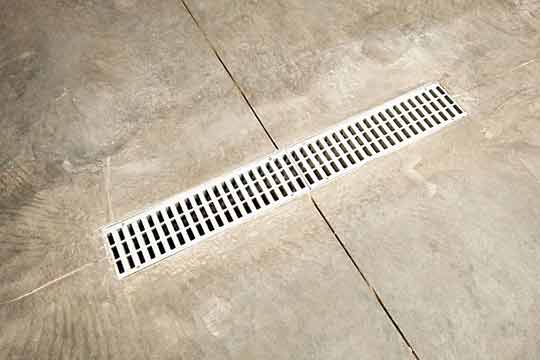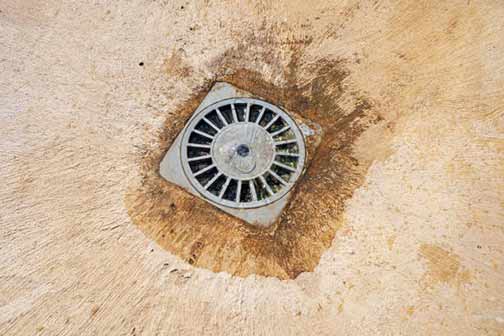
Welcome to our step-by-step guide on troubleshooting common issues with garage floor drains. Whether you are a homeowner or a business owner, having a properly functioning garage floor drain is essential for preventing water damage and maintaining a clean and safe environment. Here we will walk you through the troubleshooting process to help you identify and address any issues you may encounter with your garage floor drain.
Understanding the Importance of a Garage Floor Drain
Before we delve into the troubleshooting process, let us first understand why a garage floor drain is important. Garage floor drains are designed to efficiently remove water and other liquids from the garage floor, preventing accumulation and potential damage. They play a crucial role in preventing water damage to vehicles, tools, equipment, and structural elements within the garage. Moreover, a properly functioning floor drain helps to maintain a clean and safe environment by preventing the growth of mold and mildew.
Identifying Common Issues with Garage Floor Drains
It is important to be able to identify common issues with floor drains in order to effectively troubleshoot and address them. Here are some of the most common issues you may encounter:
- Drain Clogs: Over time, debris such as dirt, leaves, and oil can accumulate in the drain, leading to clogs.
- Odors: If you notice foul smells coming from your garage floor drain, it may be an indication of a buildup of stagnant water or organic matter.
- Drainage Problems: Improper slope or damage to the drain pipe can lead to poor drainage and water accumulation.
- Leaks: Leaks can occur due to cracks or damage in the drain pipe or its connections.

Begin by visually inspecting the drain to identify any obvious signs of damage or clogs. Look for debris or standing water that may be blocking the drain.
Troubleshooting Process: Step-by-Step
Step 1: Safety First
Prior to troubleshooting any issues with your floor drain, it is important to ensure your safety. Wear protective gloves and safety glasses to protect yourself from any harmful substances or debris that may be present.
Step 2: Inspect the Drain
Begin by visually inspecting the drain to identify any obvious signs of damage or clogs. Look for debris or standing water that may be blocking the drain.
Step 3: Remove Debris
If you notice any debris blocking the drain, carefully remove it using a pair of gloves or a small handheld tool. Be cautious not to push the debris further into the drain.
Step 4: Clear Clogs
If the drain is clogged, there are several methods you can try to clear the clog:
– Plunger: Use a plunger to create suction and dislodge the clog. Ensure the plunger is covering the drain completely and plunge vigorously to create pressure.
– Plumbing Snake: Insert a plumbing snake into the drain and rotate it clockwise to help break up the clog. Continue pushing the snake until you feel the resistance ease.
– Chemical Drain Cleaner: If the clog persists, you may consider using a chemical drain cleaner. Follow the instructions provided by the manufacturer carefully and use caution, as these chemicals can be harmful.
Step 5: Address Odors
If you are experiencing foul odors emanating from the drain, you can try the following solutions:
– Flush the Drain: Pour a mixture of hot water and vinegar down the drain to help eliminate odors. Repeat this process periodically to maintain a fresh-smelling drain.
– Use Baking Soda: Sprinkle baking soda into the drain and let it sit for a few hours before flushing it with hot water. Baking soda helps neutralize odors naturally.
Step 6: Check Drainage
Monitor the drainage of the floor drain after performing the previous steps. If water is still not draining properly, it may be a sign of a larger issue. Consider contacting a professional drain cleaning plumber for further assistance.
Step 7: Inspect for Leaks
Finally, inspect the drain and its connections for any signs of leaks. Look for water puddles or dampness around the drain pipe. If you detect a leak, it is best to call a plumber to repair the damage and prevent further issues.
Preventing Future Issues
Once you have successfully troubleshooted and addressed the issues with your garage floor drain, it is important to implement preventive measures to avoid future problems. Here are some tips to keep your garage floor drain functioning optimally:
- Regular Maintenance: Schedule regular cleaning and maintenance for your floor drain to prevent debris buildup and clogs.
- Proper Usage: Avoid pouring grease, oil, chemicals, or other non-biodegradable substances down the drain, as they can lead to clogs and damage.
- Protective Measures: Install drain covers or grates to prevent large debris from entering the drain and causing potential clogs.
- Professional Inspections: Consider hiring a professional plumber to inspect your garage floor drain periodically to identify any potential issues before they escalate.
To Wrap It Up
Troubleshooting common issues with garage floor drains is essential for maintaining a functional and efficient drain system. By following our step-by-step guide and implementing preventive measures, you can ensure that your garage floor drain remains clog-free and in optimal condition. Remember, if you encounter complex issues or are unsure about performing any troubleshooting steps, it is always best to seek professional assistance to avoid further damage or potential hazards. Take care of your garage floor drain, and it will continue to serve you well for years to come.